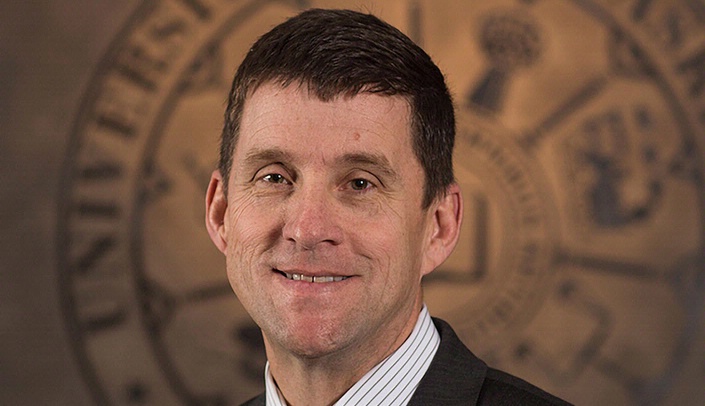The University of Nebraska has announced the creation of a unified OneIT organization that will better meet the university’s needs, reduce costs and increase efficiency.
OneIT will merge four of the five information technology groups — UNK, UNL and UNO, plus the NU ITS Enterprise Systems team — into a single, unified IT function that serves the entire system in a more cohesive and collaborative manner.
As previously announced, UNMC ITS already is going through a phased integration with Nebraska Medicine IT. Under the leadership of Michael Ash, M.D., UNMC will collaborate with OneIT to align and standardize technologies for common services and work together on joint procurement, when possible.
“A new level of collaboration, efficiency and effectiveness across IT is imperative,” said University of Nebraska President Hank Bounds, Ph.D. “It allows the university to place more emphasis on high priority IT growth areas, such as cyber-security and strategic data analysis. OneIT unifies the centralized IT systems currently operating separately under each campus CIO, including infrastructure and personnel.”
Said UNMC Chancellor Jeffrey P. Gold, M.D.: “IT services are a critical component of our med center stakeholders, and we will work collaboratively with OneIT as we also focus on our unique technology needs as a high performing academic health science center. The UNMC-Nebraska Medicine phased integration is another example of how our ITS services can be continually improved and efficiencies derived.”
Under OneIT, the chief information officers and their teams from UNK and UNO will begin reporting to Mark Askren, effective immediately. Askren is the vice president for information technology for the University of Nebraska system and also is the University of Nebraska-Lincoln Chief Information Officer.
Information technology impacts everyone across the university — from computers to web applications; from telephones to data accessibility. Rapid advances in technology and increasing reliance on a growing number of technologies call for a more effective, proactive and progressive organizational model, as represented by OneIT.
The chief information officers from each of the four campuses, in a joint statement, said Askren and the IT leadership team will create — with input from IT professionals and partners across the university — a thoughtful, thorough plan for transitioning to the new model. Leadership does not anticipate any interruptions in service, rather they say the model will drive more robust capabilities in many IT areas such as cyber-security and strategic data analysis.
An implementation recommendation plan and timeline will be presented to President Bounds and the chancellors in May, and the full transition to OneIT will be complete by the end of the 2017 calendar year.
